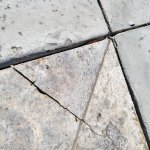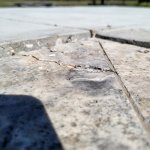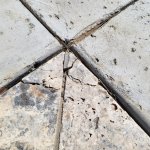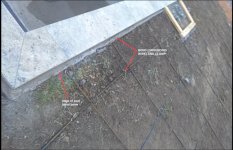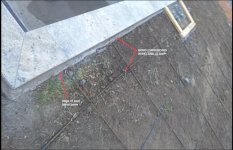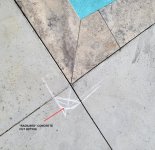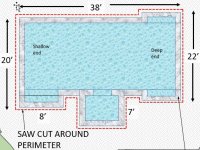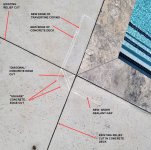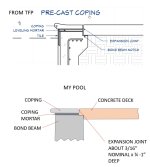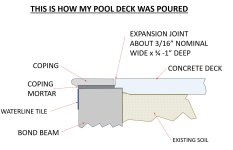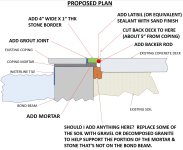Our pool has been "Under Construction" since March 2022. One thing that was never done by the GC was applying sealant to the joint between the concrete deck & Travertine coping. It cause a lot of Travertine damage over winter 2022/2023. We're going to get it all buttoned by a remodeling contractor up before the next winter, but wanted to see in the community had any preferences on sealant....
One contractor recommends SikaFlex and the other recommends NexusPro.
Some advice by the experts on this website would be helpful. The "gap" is pretty narrow-- I'd guess about 3/16" - 1/4"... if that matters.
Thanks
** UPDATE** I added jpg photos. The GC never added sealant in the gap and over the winter, the gap filled with water, some got underneath, froze and cracked every corner and parts of the deck heaved next to the travertine coping tiles....and the concrete contractor never applied a defined barrier between the travertine & the concrete he poured. They cam back with a saw and opened the expansion gap, although NOT well enough to avoid the cracking
One contractor recommends SikaFlex and the other recommends NexusPro.
Some advice by the experts on this website would be helpful. The "gap" is pretty narrow-- I'd guess about 3/16" - 1/4"... if that matters.
Thanks
** UPDATE** I added jpg photos. The GC never added sealant in the gap and over the winter, the gap filled with water, some got underneath, froze and cracked every corner and parts of the deck heaved next to the travertine coping tiles....and the concrete contractor never applied a defined barrier between the travertine & the concrete he poured. They cam back with a saw and opened the expansion gap, although NOT well enough to avoid the cracking
Attachments
Last edited:


